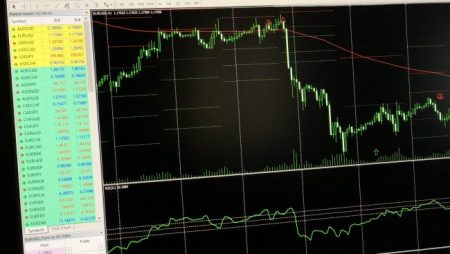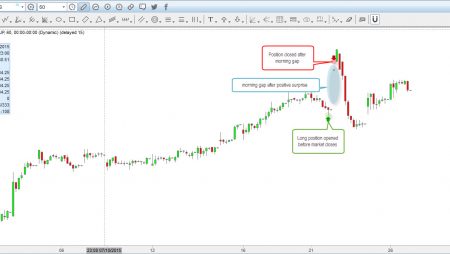Mastering the Mechanical Trading System
Much research has gone into pinpointing the causes of mechanical trading systems failures, especially after the fact. Although it may seem oxymoronic (or, to some traders, simply moronic), the main reason why these trading systems fail is because they rely too much on the hands-free, fire-and-forget nature of mechanical trading. Algorithms themselves lack the objective human oversight and intervention necessary to help systems evolve in step with changing market conditions.
Can you Blame the System?
Instead of lamenting a trading-system failure, it’s more constructive to consider the ways in which traders can have the best of both worlds: That is, traders can enjoy the benefits of algorithm-managed mechanical trading systems, such as rapid-fire automatic executions and emotion-free trading decisions, while still leveraging their innate human capacity for objective thinking about failure and success.
The most important element of any trader is the human capability to evolve. Traders can change and adapt their trading systems in order to continue winning before losses become financially or emotionally devastating.
Choose your Test
Successful traders use a system of repetitive rules to harvest gains from short-term inefficiencies in the market. For small, independent traders in the big world of securities and derivatives trading, where spreads are thin and competition fierce, the best opportunities for gains come from spotting market inefficiencies based on simple, easy-to-quantify data, then taking action as quickly as possible.
When traders develop and operate mechanical trading systems based on historical data, They are hoping for future gains based on the idea that current marketplace inefficiencies will continue. If a trader chooses the wrong data set or uses the wrong parameters to qualify the data, precious opportunities may be lost. At the same time, once the inefficiency detected in historical data no longer exists, then the trading system fails. The reasons why it vanished are unimportant to the mechanical trader. Only the results matter.
The Rules of Mechanical Trading
Pick the most pertinent data sets when choosing the data set from which to create and test mechanical trading systems. And to test a sample large enough to confirm whether a trading rule works consistently under a wide range of market conditions, a trader must use the longest practical period of test data.
So, it seems appropriate to build mechanical trading systems based on both the longest-possible historical data set as well as the simplest set of design parameters. Robustness is generally considered the ability to withstand many types of market conditions. Robustness should be inherent in any system tested across a long time range of historical data and simple rules. Lengthy testing and basic rules should reflect the widest array of potential market conditions in the future.
All mechanical trading systems will eventually fail because historical data obviously does not contain all future events. Any system built on historical data will eventually encounter ahistorical conditions. Human insight and intervention prevents automated strategies from running off the rails. The folks at Knight Capital know something about live trading snafus.
Keep it Simple
Successful mechanical trading systems are like living, breathing organisms. The world’s geologic strata are filled with fossils of organisms which, although ideally suited for short-term success during their own historical periods, were too specialized for long-term survival and adaptation. Simple algorithmic mechanical trading systems with human guidance are best because they can undergo quick, easy evolution and adaptation to the changing conditions in the environment (read marketplace).
Simple trading rules reduce the potential impact of data-mining bias. Bias from data mining is problematic because it may overstate how well a historical rule will apply under future conditions, especially when mechanical trading systems are focused on short time frames. Simple and robust mechanical trading systems shouldn’t by affected by the time frames used for testing purposes. – The number of test points found within a given range of historical data should still be large enough to prove or disprove the validity of the tested trading rules. Stated differently, simple, robust mechanical trading systems will outshine data-mining bias.
Suppose a trader uses a system with simple design parameters, such as the QuantBar system, and tests it by using the longest appropriate historical time period. In that case, the only other important tasks will be to stick to the discipline of trading the system and monitoring its results going forward. Observation enables evolution.
On the other hand, traders who use mechanical trading systems built from a complex set of multiple parameters run the risk of “pre-evolving” their systems into early extinction.
Balancing the Pros and Cons
It’s important not to confuse the robustness of mechanical trading systems with their adaptability. Systems developed based on a multitude of parameters that led to winning trades during historical periods – and even during currently observed periods – are often described as ‘robust.’ That is not a guarantee that such systems can be successfully tweaked once they have been used past their “honeymoon period.” That is an initial trading period during which conditions coincide with a certain historical period upon which the system was based.
Simple mechanical trading systems are easily adapted to new conditions, even when the root causes of marketplace change remain unclear and complex systems fall short. When market conditions change, as they continually do, the trading systems that are most likely to continue to win are simple and most-easily adaptable to new conditions; a truly robust system has longevity above all.
Simple algorithmic mechanical trading systems with human guidance are best because they can undergo quick, easy evolution and adaptation to the changing conditions in the environment (read marketplace).
Unfortunately, after experiencing an initial period of gains when using overly-complex mechanical trading systems, many traders fall into the trap of attempting to tweak those systems back to success. The market’s unknown, yet changing, conditions may have already doomed that entire species of mechanical trading systems to extinction. Again, simplicity and adaptability to changing conditions offer the best hope for survival of any trading system.
Use an Objective Measurement
A trader’s most-common downfall is a psychological attachment to their trading system. When trading-system failures occur, it’s usually because traders have adopted a subjective rather than objective viewpoint, especially with regard to stop-losses during particular trades.
Human nature often drives a trader to develop an emotional attachment to a particular system, especially when the trader has invested a significant amount of time and money into mechanical trading systems with many complex parts which are difficult to understand. However, it’s critically important for a trader to step outside the system in order to consider it objectively.
In some cases, the trader becomes delusional about the expected success of a system, even to the point of continuing to trade an obviously-losing system far longer than a subjective analysis would have allowed. Or, after a period of fat wins, a trader may become “married” to a formerly-winning system even while its beauty fades under the pressure of losses. Worse, a trader may fall into the trap of selectively choosing the testing periods or statistical parameters for an already-losing system to maintain false hope for the system’s continuing value.
An objective yardstick, such as using standard deviation methods to assess the probability of current failure, is the only winning method for determining whether mechanical trading systems have truly failed. Through an objective eye, it’s easy for a trader to quickly spot failure or potential failure in mechanical trading systems, and a simple system may be quickly and easily adapted to create a freshly-winning system once again.
Failure of mechanical trading systems is often quantified based on a comparison of the current losses when measured against the historical losses or drawdowns. Such an analysis may lead to a subjective, incorrect conclusion. For example, maximum drawdown is often used as the threshold metric by which a trader will abandon a system. Without considering the manner by which the system reached that drawdown level, or the length of time required to reach that level, a trader should not conclude that the system is a loser based on drawdown alone.
Measuring Failure: Standard Deviation versus Drawdown
In fact, the best method to avoid discarding a winning system is to use an objective measurement standard to determine the current or recent distribution of returns from the system obtained while actually trading it. Then, compare that measurement against the historical distribution of returns calculated from back-testing, while assigning a fixed threshold value according to the certainty that mechanical trading systems’ current “losing” distribution is indeed beyond normal, to-be-expected losses, and should therefore be discarded as failed.
So, for example, assume that a trader ignores the current drawdown level which has signaled a problem and triggered his investigation. Instead, compare the current losing streak against the historical losses which would have occurred while trading that system during historical test periods. Depending upon how conservative a trader is, he or she may discover that the current or recent loss is beyond, say, the 95% certainty level implied by two standard deviations from the “normal” historical loss level. This would certainly be a strong statistical sign that the system is performing poorly, and has therefore failed. In contrast, a different trader with greater appetite for risk may objectively decide that three standard deviations from the norm (i.e. 99.7%) is the appropriate certainty level for judging a trading system as “failed.”
The most important factor for any trading systems’ success, whether manual or mechanical, is always the human decision-making ability. The value of good mechanical trading systems is that, like all good machines, they minimize human weaknesses and empower achievements far beyond those attainable through manual methods. Yet, when properly built, they still allow firm control according to the trader’s judgment and allow him or her to steer clear of obstacles and potential failures.
Although a trader can use math in the form of a statistical calculation of standard distribution to assess whether a loss is normal and acceptable according to historical records, he or she is still relying on human judgment instead of making purely-mechanical, math-based decisions based on algorithms alone.
Traders can enjoy the best of both worlds. The power of algorithms and mechanical trading minimizes the effects of human emotion and tardiness on order placement and execution, especially with regard to maintaining stop-loss discipline. It still uses the objective assessment of standard deviation in order to retain human control over the trading system.
Changing the System
Along with the objectivity to detect when mechanical trading systems change from winners into losers, a trader must also have the discipline and foresight to evolve and change the systems so they can continue to win during new market conditions. In any environment filled with change, the simpler the system, the quicker and easier its evolution will be. If a complex strategy fails, it may be easier to replace than to modify it, while some of the simplest and most-intuitive systems, such as the QuantBar system, are relatively easy to modify on-the-fly in order to adapt to future market conditions.
In summary, it can be said properly-built mechanical trading systems should be simple and adaptable. You should also test your tradigng system according to the right type and amount of data so that they will be robust enough to produce gains under a wide variety of market conditions. And, a winning system must be judged by the appropriate metric of success. Instead of merely relying on algorithmic trading rules or maximum drawdown levels, any decision about whether a system has failed should be made according to the trader’s human judgment. Decisions should also be based on an assessment of the number of standard deviations of the system’s current performance when measured against its historic-test losses. If mechanical trading systems are failing to perform, the trader should make the necessary changes instead of clinging to a losing system.


